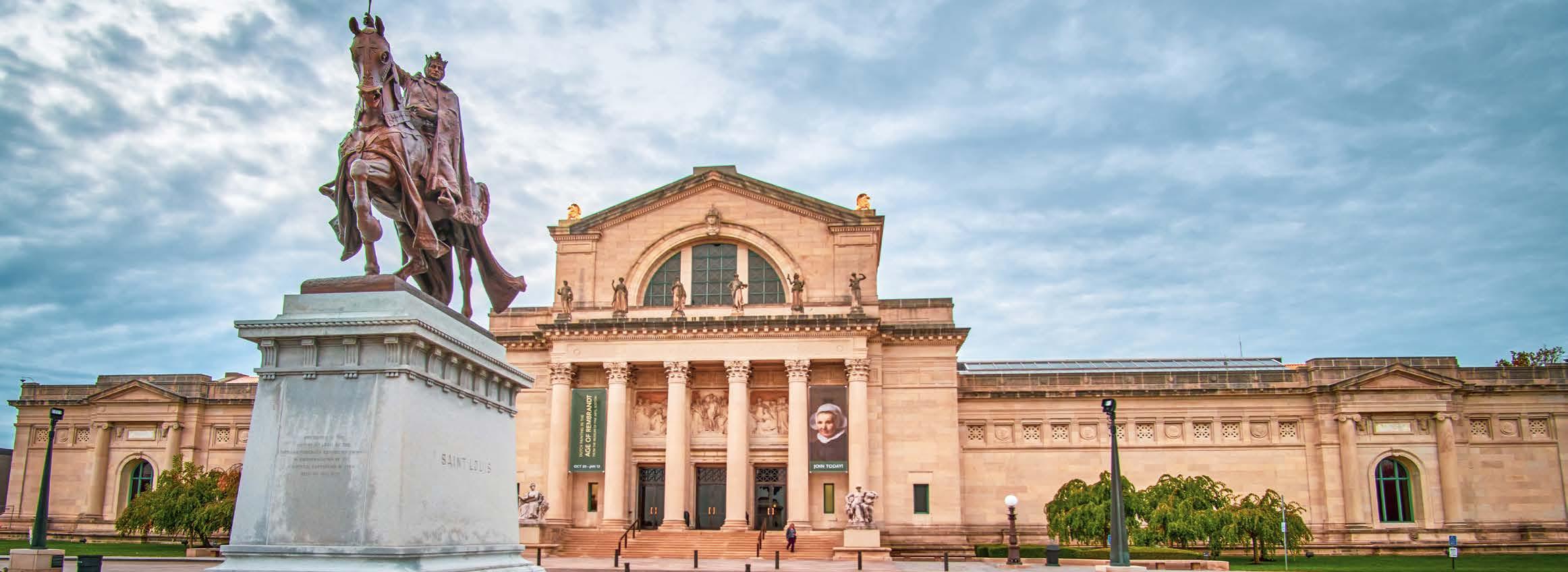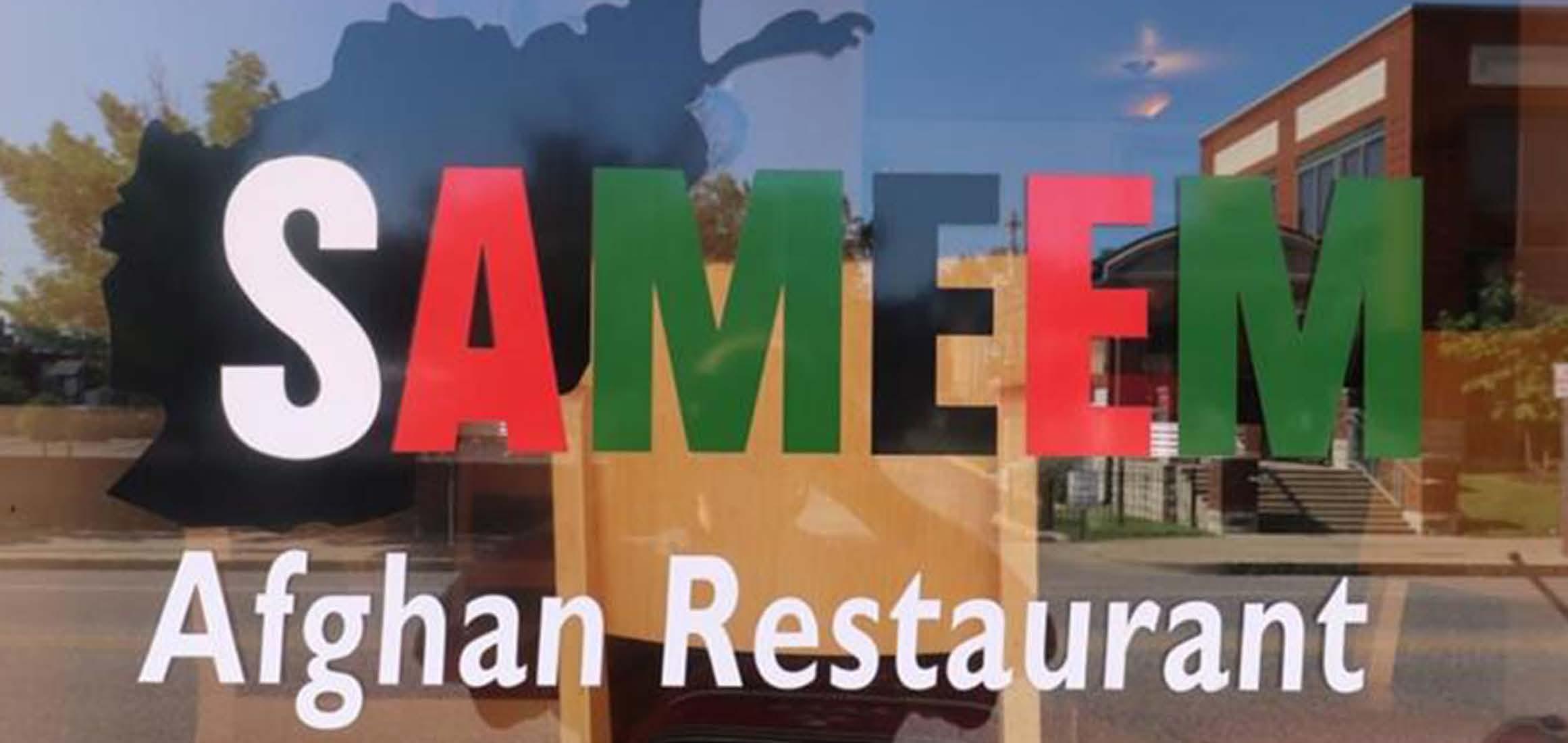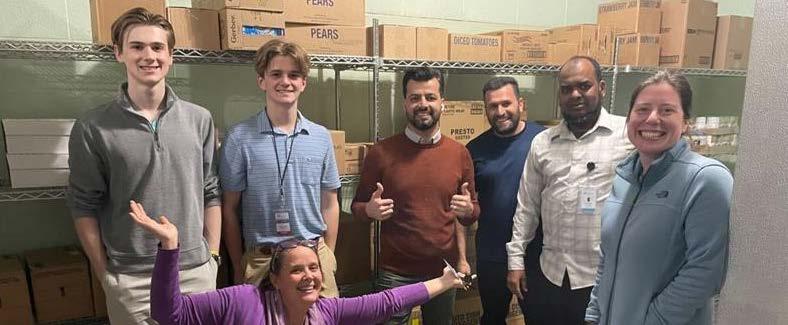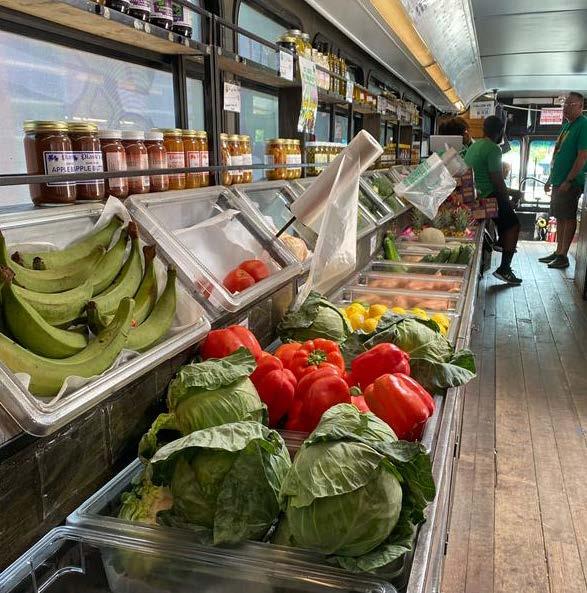
7 minute read
A CULTURAL TREASURE AND DIVERSE ART HAVEN
The Saint Louis Art Museum (SLAM) is a prestigious art institution in the United States, housing a diverse collection of paintings, sculptures, cultural artifacts, and ancient masterpieces from around the world. Located in Forest Park, St. Louis, Missouri, this three-story museum attracts up to half a million visitors annually. Notably, admission is free, thanks to funding from the cultural tax district for St. Louis City and County.
Beyond its permanent collections, the museum offers a variety of rotating exhibitions and installations, including the Currents series, showcasing contemporary artists, and exhibitions dedicated to new media art and works on paper.
The museum’s rich history dates back to its founding in 1879 as the Saint Louis School and Museum of Fine Arts, initially an independent entity within Washington University in St. Louis. Led by director Halsey Ives, the institution provided art education and studio classes, fostering generations of local artists and artisans while maintaining a museum collection.
After the 1904 Louisiana Purchase Exposition, the museum relocated from downtown to the Palace of Fine Arts, one of the fair’s lasting structures. However, a legal dispute over an art tax marked the formal separation of the museum from the university in 1909, leading to the creation of three separate civic institutions: the City Art Museum (evolving into the Saint Louis Art Museum), the Mildred Lane Kemper Art Museum, and the St. Louis School of Fine Arts.
Over the years, the museum continued to grow, adding an extension in the 1950s to accommodate an auditorium for films, concerts, and lectures. To secure its financial future, a tax district was established in 1971, expanding the museum’s support base to include St. Louis County, and it was subsequently renamed the Saint Louis Art Museum in 1972.
In 2005, plans to expand the museum were set in motion, with renowned British architect Sir David Chipperfield chosen for the design. The expansion, completed in 2013, added over 224,000 square feet of gallery space and an underground garage, made possible through private gifts, foundation support, and the sale of tax-exempt bonds.
The museum’s collection boasts more than 34,000 objects spanning from antiquity to contemporary times, organized into nine categories. Notable highlights include works by European masters like Matisse, Gauguin, Monet, Picasso, and Van Gogh. Additionally, the museum houses the world’s largest Max Beckmann collection and outstanding pieces from various cultures, including Oceanic, Mesoamerican, and Turkish art.
The Saint Louis Art Museum has received several significant donations, including a promised gift in 2021 from Emily Rauh Pulitzer, featuring artworks by renowned artists such as Picasso, Braque, Brâncuși, and others.
As part of its commitment to contemporary art, the museum also features a site-specific work by British artist Andy Goldsworthy, called Stone Sea. This artwork comprises twenty-five arches made of native limestone, inspired by the region’s Prehistoric past when it was a shallow sea.
The Saint Louis Art Museum stands as a beacon of artistic diversity and cultural appreciation, providing free access to art for thousands of visitors annually and contributing significantly to the cultural heritage of St. Louis and the nation.
The Afghan National Museum, established in 1919 under King Amanullah Khan’s rule, holds a rich collection of artifacts that reflect the country’s cultural heritage. Originally housed in the Bagh-e Bala Palace, the museum later moved to its present location in 1931. Over the years, it has faced numerous challenges, including looting during the civil war in the 1990s, resulting in the loss of 70% of its displayed objects.
During the civil war, the museum endured rocket attacks and was used as a military base, causing significant destruction. In 1996, the remaining staff managed to catalog the remaining materials, but further damage occurred in 2001 when the Taliban destroyed numerous pieces of art for religious reasons
Efforts to restore the museum began in the early 2000s, with UNESCO and Interpol aiding in the recovery of over 8,000 artifacts, some found in vaults in Kabul and others abroad, including a collection in Switzerland. Substantial funds were invested between 2003 and 2006 to refurbish the building, and many precious objects were recovered and inventoried.
Despite the challenges, the museum has continued its mission to preserve Afghanistan’s cultural heritage. In 2013, it collaborated with the Oriental Institute of the University of Chicago on the Mobile Museum Project, which brought 3D replicas of artifacts to schools across Afghanistan, aiming to promote cultural awareness and education.
In recent years, the museum’s directors, including Mohammad Fahim Rahimi and Mo- hammad Zubair Abedi, have worked tirelessly to safeguard the collection, especially given the concerns following the 2021 Taliban offensive and the Fall of Kabul.
The museum’s collection is diverse and includes ivory carvings from the Kushan Empire and early Islam eras, the famous Rabatak Inscription of King Kanishka, and many other archaeological treasures from different periods in Afghanistan’s history. Among these are painted frescos, inscriptions, sculptures, coins, and metal objects recovered from various excavation sites.
The museum boasts an extensive numismatic collection with around 30,000 coins, which has been the subject of archaeological publications, although it remains closed to the public and scholars.
Certain important parts of the collection, like material from Bagram, Ai-Khanoum, Tepe Fullol, and gold jewelry from excavated burials at Tillya Tepe, have been on traveling exhibitions since 2006. These artifacts have been showcased in various museums around the world, with plans to eventually return them to the Afghan National Museum.
Despite its tumultuous history, the Afghan National Museum remains dedicated to preserving and showcasing the country’s rich cultural heritage for future generations to cherish and learn from. It serves as a testament to the resilience and determination of the people of Afghanistan in safeguarding their history and identity amid adversity.

When visiting St. Louis, there is at least one place you can be sure to get authentic Aghan food. Sameem Afghan Restaurant offers both dine-in and carry-out menu items to help ensure your meal experience is the best it can be. This year, be sure to visit Sameem’s booth at the International Institute’s annual Festival of Nations Celebration.

“Attendees who come to the festival are naturally curious and love the international cuisines. This allows opportunity for folks like me to engage with them by not only serving food but also handing out cards and flyers too,” said Sameem owner Fahime Mohammed. “Most people who come to the restaurant reference the initial meeting at the festival and ask for the same food.”
Each year, the Festival of Nations draws thousands of people to Tower Grove Park to participate in a two-day event of music, food, dance, cultural exchange and community. Visitors return year after year to experience more than just an event. Families create core memories. Friendships being and extend. Heritages are preserved. By providing a space for cultural crafts and food to be showcased, the festival maintains many small businesses in the area.
“The business owners normally get a chance to walk around to explore and we learn who serves what, who is selling what this year,” said Mohammed. “Throughout the weekend, we usually either barter with our fellow booth vendors or exchange business cards which leads to more advertising. We’re all here to support each other, too.”
For many, Festival of Nations also serves as a launching point for many small businesses to gain popularity and acknowledgement within the community. “Festival of Nations has fasttracked our popularity by reaching our name to folks outside the city limits, something that wouldn’t have been possible except through social media.”
Be sure to visit this year’s Festival of Nations on Saturday, August 26 & Sunday, August 27.

Operation Food Search is a St. Louis-based non-profit organization dedicated to ending hunger in the greater St. Louis metropolitan area. More than 3 million dollars’ worth of food and household essentials are distributed annually to 330 community partner agencies, which in turn feeds 200,000 people in need each month – nearly one-third of whom are children. One of those agencies happens to be the International Institute of St. Louis.
For the fifth year in a row, Operation Food Search is providing free summer meals for youth in the Youth Program & After School Tutoring Programs Monday through Thursday. In addition, so far this summer, seventy-six meals have been distributed to a wider client base onsite at our bi-weekly Community Bazaar. Operation Food Search provides their MetroMarket onsite for clients to purchase fresh, cost-effective produce too for those who may not have access to food resources otherwise.
“Since 2018, Operation Food Search has been a wonderful partner for our Teen Program. Knowing they can rely on OFS, our youth clients can focus on improving their English, getting good grades in school, and socializing with their friends,” said Katherine Schoeberle, Teen Program Coordinator.
“Food security is essential to the successful integration of our refugee and immigrant youth in St. Louis,” said Shoeberle. “We are incredibly grateful for our partnership with OFS and we look forward to continuing this fall with another year of Afterschool Meals. Refugee and immigrant high-school students attending St. Louis Public Schools who enroll in the program receive a free meal from OFS, homework help, English practice, and academic and social skill development. This is much needed support for our new students and youth in our community.”


Indulge in a culinary journey that takes you straight to the heart of Afghanistan and Persia at Royal Kebab Restaurant. Mehdi with a genuine passion for cooking and an unwavering commitment to quality, Mahdi Haidari invites you to savor the authentic flavors of his homeland.
The story behind Mahdi Haidari’s success is one of resilience and gratitude. Having arrived in America with limited means and support, he found assistance from the International Institute, which helped him and his family settle into their new home. Now, Mahdi pays it forward by sharing the rich culinary heritage of Afghanistan and Persia with new Afghan refugees, crafting each dish with love and dedication.
Royal Kebab
Taste the Essence of Afghanistan and Persia
At Royal Kebab, new customers are warmly welcomed with a special treat. Upon your first visit, you’ll be treated to a complimentary dessert of your choice - the mouthwatering homemade baklava or the luscious Jalebi. This delightful gesture sets the tone for an extraordinary dining experience that will leave you craving more.
Conveniently located at 3611 Bates Street, Royal Kebab is easily accessible to locals and visitors alike. Stepping inside, you’ll be embraced by the warm hospitality characteristic of Afghan and Persian cultures. Whether you choose to dinein, take out, or order online, you’ll be met with a friendly and attentive team, ensuring your visit is nothing short of exceptional.
Looking ahead, Mahdi’s dreams of expanding his culinary haven, opening new branches to make these delightful flavors accessible to even more people. Buffets filled with a diverse selection of Afghan and Persian dishes, alongside a range of tantalizing desserts, are part of the future vision.

At Royal Kebab, each dish embodies the heart and soul of Afghanistan and Persia. The combination of authentic flavors and warm hospitality creates a dining experience that goes beyond just food—it’s a celebration of culture, taste, and togetherness.
Address: 3611 Bates Street Phone: (314) 571-9971







